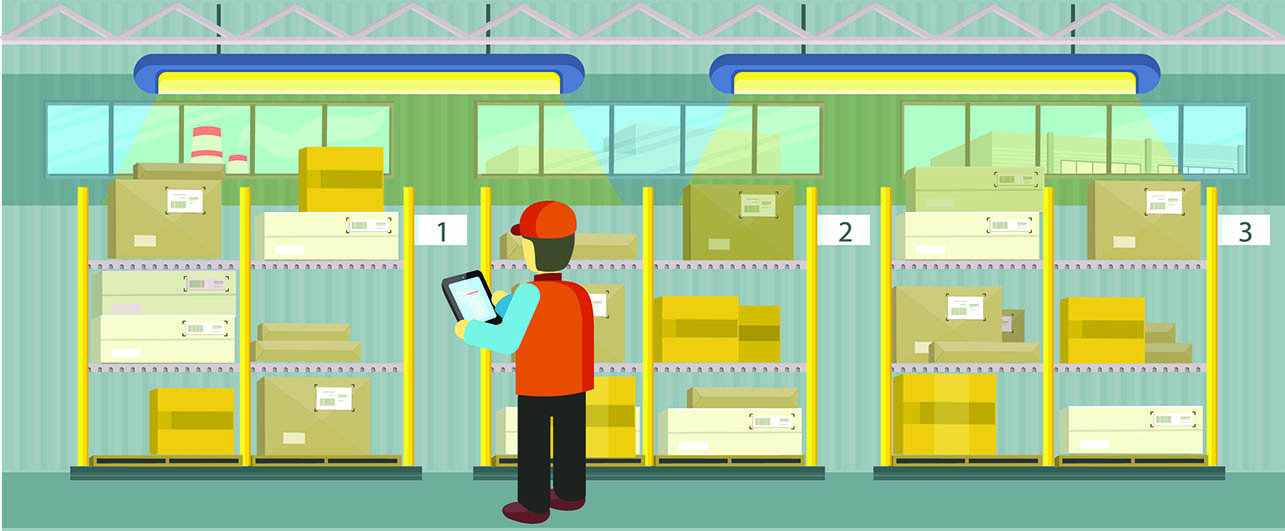Learning Zone
Using software for inventory optimisation
The Challenge of Inventory Optimisation
Effective inventory management practices are the key to controlling the cost of parts in any type of fleet operation.

…and optimising your inventory programmes is essential to keeping administrative costs as low as possible. By following these five easy steps, you can streamline your parts inventory optimisation and positively impact your fleet’s bottom line and eradicate any poor inventory management practices:
1. Keep parts organised
Parts room housekeeping is a valuable habit for two reasons:
- Keeping inventory organised helps provide visibility into stock for more effective ordering, particularly for high volume items used during routine maintenance.
- It helps to identify slow moving and obsolete parts that take up limited shelf space and unnecessarily raise inventory costs.
Your parts room should not be a warehouse – cycling out parts is a practical and cost-effective practice.
Organising parts in sections is also a time and cost saving approach to inventory optimisation. Regularly used and fast-moving parts – like those for preventive maintenance – should be most accessible.
Keeping parts in bins or on shelves based on system and component groups such as engines, brakes and electrical can streamline pulling parts for repair orders and, in turn, that can lead to improved shop and technician productivity and reduced downtime.
Placing heavy items where they can be handled more easily is also a time and labour-saving approach.
2. Train parts personnel
Your fleet parts room personnel should know your operation’s vehicles and fleet maintenance programmes inside out.
To always ensure that adequate stock is on hand, they should be trained to recognise which parts in your inventory are fast moving, therefore needing to be reordered more frequently.
Likewise, identifying slow moving or obsolete parts can help free up shelf space, lower costs and save unnecessary spend.
DID YOU KNOW: You can turn to suppliers to help train parts room staff, so they are familiar with manufacturers’ parts lists and ordering systems.
3. Leverage management technology

In order to streamline your ordering, returns, billing and payment processes, it’s important to look at ways to integrate fleet management and parts suppliers’ systems.
System integrations help to ensure data accuracy and can reduce demands on administration, finance and other personnel – helping to optimise inventory, cut costs and, in some cases, staffing requirements.
In the parts room, bar coding systems help with inventory control and work to reduce data entry errors. Bar code labels can be used to automatically assign parts used to individual vehicle service histories, reports on parts use, and to generate orders based on turnover and pre-set parameters.
4. Use service data
Your vehicles’ service histories tell an interesting and valuable story, revealing trends on parts usage, system failures and component failures. This information can be used to determine:
- Any upcoming parts needs.
- Whether inventory levels need to be changed to meet demand
With an in-depth picture of parts histories, you can also develop budgets for parts expenditure, see how effective those budgets are and make more informed purchasing decisions.
Service data from telematics systems will also provide you with information that will enhance your inventory optimisation plan, further reducing downtime for service. For example, knowing that a group of vehicles will need a parts replacement campaign allows for more efficient inventory planning and control, and for more cost-effective purchasing practices.
5. Work with suppliers
A good parts supplier is an invaluable resource. Vendors can be of assistance in helping you to use information on past purchases to predict future needs, set reorder points and maintain adequate inventory stocking levels.
Their knowledge of your operation and experience across multiple fleets can help to identify repetitive part failures and perform comparative analyses between manufacturers.
Suppliers are also adept at determining which parts offer the best overall value for your operation.
A knowledgeable and experienced team is one that is well versed in how to find the right parts at the lowest cost, not just the lowest priced part.
Keeping it all in one place
Parts modules that allow personnel to track inventory and identify surplus and obsolete parts easily can be used to show what needs to be ordered and what’s not needed at all.
Ultimately, software can be used to streamline inventory management and enable the most effective stocking and purchasing practices by:
- Monitoring and adjusting inventory levels based on usage and upcoming needs
- Sourcing parts requested in repair orders
- Issuing purchase orders automatically to vendors when parts inventory levels drop to a pre-determined quantity, or for special items
- Minimising paper-based and manual inventory replenishment and parts allocation processes
- Tracking parts coverage once a replacement part is installed in a vehicle, issuing an alert if a covered item fails within the warranty period, and initiating automated claims
- Improving purchasing practices to maintain correct stocking levels at the lowest cost, eliminate obsolete and uncommon parts, handle high-cost emergency parts orders, and prevent overstock situations
Software-based inventory management programmes can lower downtime and improve asset utilisation by returning vehicles to service faster. It can also reduce labour costs for technicians that can add up quickly when a part is out of stock or not easily located.
With a parts system that is integral to your fleet maintenance management practices, solving inventory management challenges is much easier.



